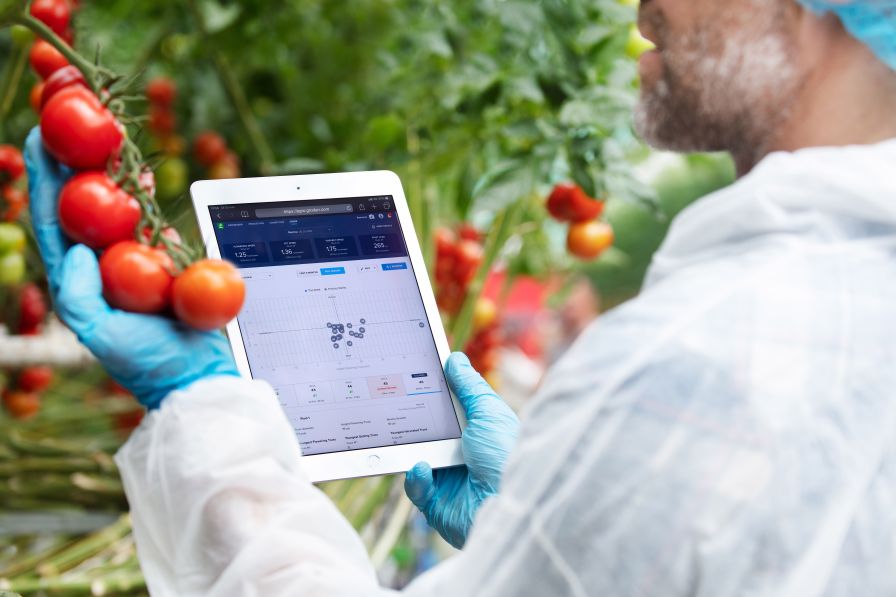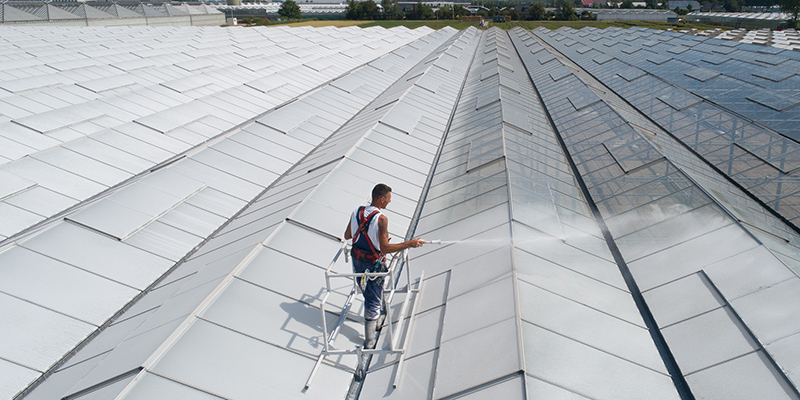The Collective Power of Greenhouse Data and Plant Science

Plant and data science models are unique for every grower because every grower is different, and their specific growing conditions must be considered. Photos: Grodan
Data-driven cultivation is not new, as greenhouse growers have used climate and rootzone data to help direct their actions for several years. However, the technology is evolving beyond simple monitoring, and it’s becoming possible to analyze and predict outcomes based on data inputs from monitoring devices.
The advancements in artificial intelligence (AI) and data science in the horticulture sector are game-changing technologies that help growers realize the power of data in the greenhouse to increase efficiency, quality, and yield. AI involves using computers to do things that traditionally require human intelligence. This means creating algorithms to classify, analyze, and draw predictions from data. It also involves acting on data, learning from new data, and improving over time.
How AI and Data Science are Transforming the Industry
There are three key reasons that AI is set to change how greenhouse and indoor farms operate:
- AI has a tremendous potential to help greenhouses meet the expanding demand for fresh and sustainable food production, while ensuring critical resources such as water and inputs such as phosphorous are conserved. Greenhouses and indoor growing facilities are increasingly important in meeting these demands for food in the future.
- Big data creates great potential for personal and local solutions. The quality and quantity of data is important for growers to optimize their production, but it is tedious to ingest and digest it. The data has many useful applications in greenhouse operations. One such application is forecasting. Grodan’s latest innovation e-Gro, for example, enables accurate yield prediction up to four weeks. Growers benefit from AI-based predictions and data-driven insights in the greenhouse.
- Automation will greatly improve efficiency. Manual labor is still required in the greenhouse for planting, crop registration, harvesting, and other activities. It is time consuming and repetitive. The need for automation is not just for efficiency-related reasons, but also health and security, as we have witnessed during the COVID-19 pandemic.
Combining data and plant science has the potential to increase efficiency and sustainability. Cultivation has many sources of usable data including plant growth, rootzone, climate conditions, etc. Collecting all that data can be time-consuming and prone to errors; however, high-tech systems can collect all of the data from sensors and images, analyze the information, and provide insights and KPIs.
Combining Data Science with Plant Science
Plant Science is a classical science involving plant physiology, genetics, and growing. Data Science is the science of extracting useful and actionable knowledge from raw data. When the grower’s expertise is augmented by rich data and smart algorithms that identify correlations and even causations, the result is data-driven cultivation that can give a better crop quality, increased yield, and more efficiency.
Plant and data science models are unique for every grower because every grower is different, and their specific growing conditions must be considered. Each greenhouse location, type of greenhouse, and growing media is unique. The variety directly affects growth and yield. Personalized data modeling and working with the right program is essential. For example, Grodan developed the data platform e-Gro with complex algorithms that account for the variety and analyze your personal greenhouse data in real-time.
Data-driven growing is gradually becoming essential because of the complexity of the issues facing growers. The facilities that get the strongest gains and return on investment from AI and data science understand that predictive analytics, such as using data to forecast future harvest, and prescriptive analytics, using data inputs to help with better decision making, requires solid data collection for at least one growing season. These analytical models need to be customized to include the real-life behaviors of plants versus the theoretical plant physiology models, as there are many external and unexpected factors in growing, such as extreme climate conditions, price fluctuations, pests and diseases, labor issues, etc. With good quality data input, robust algorithms can be built, and the processing of greenhouse data will give very high-value, actionable results in all parameters of growth.
AI and Big Data Enable the Upscaling of Greenhouses
Data gives growers more control in the greenhouse. The overwhelming trend today is towards sustainable production. Data-driven cultivation improves the quality of the final yield (e.g., the appearance of the fruit) and enhances the nutritional value of the fruit. The interest in AI and new technologies is increasing. The scale of cultivation companies is increasing, and the required upscaling introduces new challenges. Machine learning, AI, and data science can provide an answer. There is also an increasing number of multi-state and multi-nation operations and data systems that make it possible to run the company remotely while operations are optimized at each greenhouse.
Data-driven cultivation is transforming the greenhouse and indoor growing industry. The challenges the industry faces with food demand, resource scarcity, changing market conditions, and increasing scale creates urgency to gain control over cultivation systems. Growers have a greater degree of control of their production systems, and with the adoption of AI and data science, they will have the power to truly optimize the performance of their crops. The more data that can be fused from various sources within the greenhouse and indoor farm, the more precise the growing process can be. Data-driven software platforms that utilize powerful algorithms based on deep horticulture knowledge combined with data science are important tools to effectively leverage the power of AI in the greenhouse and indoor farm.









